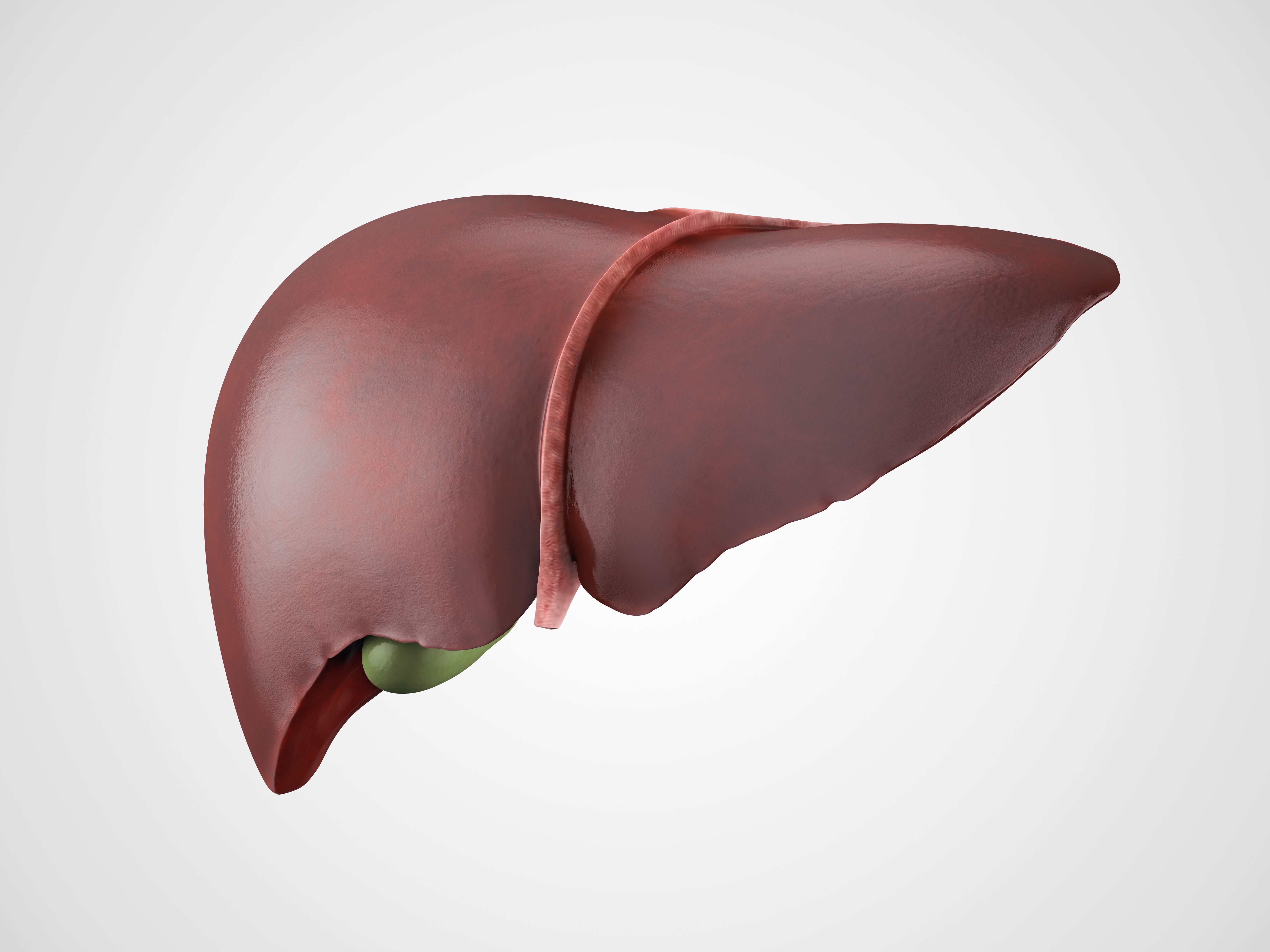TACE Plus Camrelizumab/Rivoceranib Extends PFS in Unresectable Liver Cancer
Additionally, data show a trend towards improved overall survival with TACE plus camrelizumab/rivoceranib in the phase 2 CARES-005 study.
"The CARES-005 study showed a clinically meaningful and statistically significant improvement in the primary end point of PFS for [patients with] unresectable HCC who received TACE plus immunotherapy-based systemic therapy compared [with] TACE alone," according to study author Gao-Jun Teng, MD.

Combining transarterial chemoembolization (TACE) with camrelizumab and rivoceranib (apatinib) elicited a clinically meaningful and statistically significant progression-free survival (PFS) improvement among patients with unresectable hepatocellular carcinoma (HCC), according to data from the phase 2 CARES-005 study (NCT04559607) presented at the 2025 ASCO Gastrointestinal Cancer Symposium.1
Based on Response Evaluation Criteria in Cancer of the Liver (RECICL) criteria, the median PFS was 10.8 months (95% CI, 8.8-13.7) with TACE plus camrelizumab/rivoceranib vs 3.2 months (95% CI, 2.4-4.2) with TACE alone across the intent-to-treat (ITT) population (HR, 0.34; 95% CI, 0.24-0.50; P < .0001). The 6-month PFS rates in each respective arm were 70.8% vs 31.5%. Of note, PFS outcomes generally favored the TACE plus camrelizumab/rivoceranib arm across patient subgroups based on factors such as age, sex, ECOG performance status, and prior TACE exposure.
The objective response rate (ORR) was 65.0% (95% CI, 54.8%-74.3%) with TACE plus camrelizumab/rivoceranib vs 29.0% (95% CI, 20.4%-38.9%) per RECICL criteria. In each respective arm, the disease control rate (DCR) was 87.0% (95% CI, 78.8%-92.9%) vs 63.0% (95% CI, 52.8%-72.4%), the median duration of response (DOR) was 11.4 months (95% CI, 9.0-17.5) vs 6.9 months (95% CI, 4.3-9.8), and the median time to unTACEable progression (TTUP) was 13.7 months (95% CI, 10.7-19.6) vs 3.9 months (95% CI, 2.5-5.7).
Using modified RECIST (mRECIST) criteria, the ORR was 61.0% (95% CI, 50.7%-70.6%) with TACE in combination with camrelizumab/rivoceranib and 29.0% (95% CI, 20.4%-38.9%) with TACE alone. Other outcomes per mRECIST criteria in each arm included a DCR of 85.0% (95% CI, 76.5%-91.4%) vs 58.0% (95% CI, 47.7%-67.8%) and a median DOR of 7.6 months (95% CI, 6.9-11.4) vs 4.7 months (95% CI, 2.4-7.0).
Data showed that PFS outcomes improved with the addition of camrelizumab/rivoceranib to TACE among patients with Barcelona Clinical Liver Cancer (BCLC) stage A or B disease per RECICL (HR, 0.34; 95% CI, 0.21-0.55) and mRECIST guidelines (HR, 0.44; 95% CI, 0.28-0.70). Similar improvements occurred with this regimen among patients with BCLC stage C disease per RECICL (HR, 0.39; 95% CI, 0.22-0.67) and mRECIST criteria (HR, 0.44; 95% CI, 0.25-0.77). Additionally, OS appeared to improve when adding camrelizumab and rivoceranib to TACE among patients with BCLC stage A/B (HR, 0.88; 95% CI, 0.48-1.61) and BCLC stage C disease (HR, 0.86; 95% CI, 0.48-1.53).
“The CARES-005 study showed a clinically meaningful and statistically significant improvement in the primary end point of PFS for [patients with] unresectable HCC who received TACE plus immunotherapy-based systemic therapy compared [with] TACE alone,” Gao-Jun Teng, MD, of Zhongda Hospital, Southeast University, stated in the presentation.1 “The safety profile for the combination of [TACE plus camrelizumab/rivoceranib] was manageable and consistent with the known adverse effect [AE] profiles of TACE, camrelizumab, and rivoceranib in unresectable HCC.”
In this multicenter phase 2 study, 200 patients were randomly assigned 1:1 to receive TACE alone (n = 100) or in combination with camrelizumab at 200 mg intravenously every 3 weeks and rivoceranib at 250 mg orally once daily (n = 100). Crossover was permitted in the event of progression or unacceptable toxicity. Investigators stratified patients based on prior TACE procedures, vascular invasion, and prior treatment with tyrosine kinase inhibitors (TKIs).
The trial’s primary end point was PFS. Secondary end points included PFS per mRECIST criteria, TTUP, ORR, DCR, DOR, OS, and safety.
Patients 18 years and older with a diagnosis of HCC confirmed via radiology, histology, or cytology were eligible for enrollment on the trial.2 Other eligibility criteria included having no extrahepatic metastasis, at least 1 measurable lesion per RECICL guidelines, Child-Pugh A disease, and an ECOG performance status of 0 or 1.
The median age was 58.5 years (range, 51.5-65.0) in the TACE plus camrelizumab/rivoceranib arm and 57.0 years (range, 51.0-65.5) in the TACE alone arm. In each respective group, most patients were male (87.0% vs 87.0%), had an ECOG performance status of 0 (56.0% vs 58.0%), had BCLC stage B (44.0% vs 42.0%) or stage C disease (42.0% vs 44.0%), had no prior lines of TACE-based treatment (75.0% vs 76.0%), and had no prior TKI therapy (98.0% vs 97.0%).
Although there were limited OS events at the time of analysis, Teng noted a trend towards improved OS when adding camrelizumab/rivoceranib to TACE. Investigators will continue to follow up for survival.
Across the safety set in the TACE plus camrelizumab/rivoceranib (n = 94) and TACE alone arms (n = 103), common any-grade treatment-related AEs (TRAEs) included aspartate aminotransferase (AST) increases (61.7% vs 30.1%), alanine aminotransferase (ALT) increases (55.3% vs 30.1%), and abdominal pain (42.6% vs 31.1%). Additionally, grade 3 or higher TRAEs in each arm included AST increases (30.9% vs 12.6%), ALT increases (24.5% vs 13.6%), hypertension (13.8% vs 0.0%), and platelet count decreases (11.7% vs 2.9%).
References
- Zhu H, Teng G-J, Fan W, et al. Transarterial chemoembolization (TACE) combined with camrelizumab and apatinib versus TACE alone in the treatment of unresectable hepatocellular carcinoma eligible for embolization: A multicenter, open-label, randomized, phase 2 study (CAP-ACE). J Clin Oncol. 2025;43(suppl 4):LBA522. doi:10.1200/JCO.2025.43.4_suppl.LBA522
- TACE combined with camrelizumab and apatinib in intermediate and advanced hepatocellular carcinoma. ClinicalTrials.gov. Updated December 18, 2023. Accessed January 24, 2025. https://tinyurl.com/32hjxaj9
Newsletter
Stay up to date on recent advances in the multidisciplinary approach to cancer.